



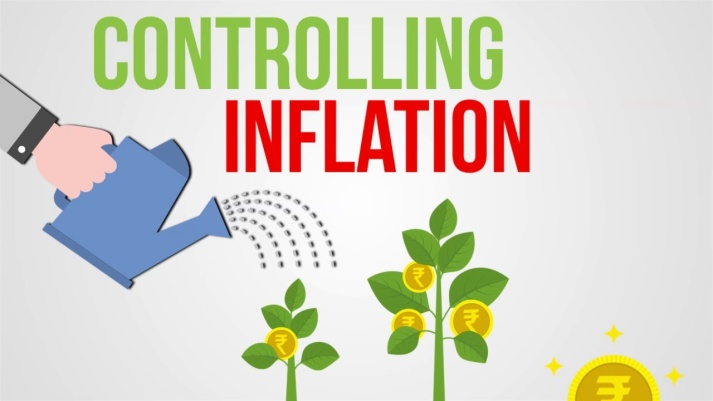

Disclaimer: Copyright infringement not intended.
Context
Inflation Scenario across the world
TO KNOW BASICS OF INFLATION: MUST READ: https://www.iasgyan.in/daily-current-affairs/inflation-29#:~:text=Inflation%20refers%20to%20a%20sustained,transport%2C%20consumer%20staples%2C%20etc.
Measures to control Inflation
Inflation is caused by the failure of aggregate supply to equal the increase in aggregate demand. Inflation can, therefore, be controlled by increasing the supplies of goods and services and reducing money incomes in order to control aggregate demand.
Some of the important measures to control inflation are as follows:
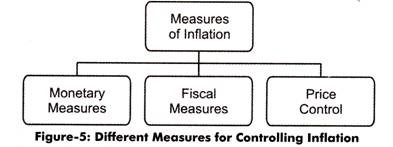
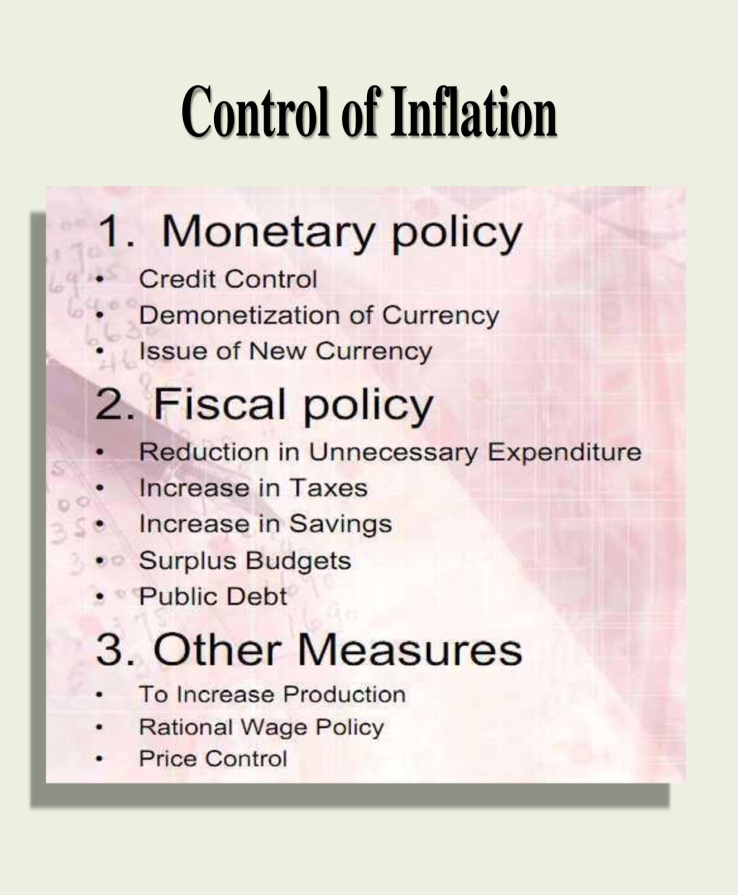
Monetary measures aim at reducing money incomes.
(a) Credit Control:
One of the important monetary measures is monetary policy. The central bank of the country adopts a number of methods to control the quantity and quality of credit. For this purpose, it raises the bank rates, sells securities in the open market, raises the reserve ratio, and adopts a number of selective credit control measures, such as raising margin requirements and regulating consumer credit. Monetary policy may not be effective in controlling inflation, if inflation is due to cost-push factors. Monetary policy can only be helpful in controlling inflation due to demand-pull factors.
(b) Demonetisation of Currency:
However, one of the monetary measures is to demonetise currency of higher denominations. Such a measures is usually adopted when there is abundance of black money in the country.
(c) Issue of New Currency:
The most extreme monetary measure is the issue of new currency in place of the old currency. Under this system, one new note is exchanged for a number of notes of the old currency. The value of bank deposits is also fixed accordingly. Such a measure is adopted when there is an excessive issue of notes and there is hyperinflation in the country. It is a very effective measure. But it is inequitable as hurts the small depositors the most.
Monetary policy alone is incapable of controlling inflation. It should, therefore, be supplemented by fiscal measures. Fiscal measures are highly effective for controlling government expenditure, personal consumption expenditure, and private and public investment.
The principal fiscal measures are the following:
(a) Reduction in Unnecessary Expenditure:
The government should reduce unnecessary expenditure on non-development activities in order to curb inflation. This will also put a check on private expenditure which is dependent upon government demand for goods and services. But it is not easy to cut government expenditure. Though this measure is always welcome but it becomes difficult to distinguish between essential and non-essential expenditure. Therefore, this measure should be supplemented by taxation.
(b) Increase in Taxes:
To cut personal consumption expenditure, the rates of personal, corporate and commodity taxes should be raised and even new taxes should be levied, but the rates of taxes should not be so high as to discourage saving, investment and production. Rather, the tax system should provide larger incentives to those who save, invest and produce more.
Further, to bring more revenue into the tax-net, the government should penalise the tax evaders by imposing heavy fines. Such measures are bound to be effective in controlling inflation. To increase the supply of goods within the country, the government should reduce import duties and increase export duties.
(c) Increase in Savings:
Another measure is to increase savings on the part of the people. This will tend to reduce disposable income with the people, and hence personal consumption expenditure. But due to the rising cost of living, people are not in a position to save much voluntarily.
Keynes, therefore, advocated compulsory savings or what he called ‘deferred payment’ where the saver gets his money back after some years. For this purpose, the government should float public loans carrying high rates of interest, start saving schemes with prize money, or lottery for long periods, etc. It should also introduce compulsory provident fund, provident fund-cum-pension schemes, etc. All such measures increase savings and are likely to be effective in controlling inflation.
(d) Surplus Budgets:
An important measure is to adopt anti-inflationary budgetary policy. For this purpose, the government should give up deficit financing and instead have surplus budgets. It means collecting more in revenues and spending less.
(e) Public Debt:
At the same time, it should stop repayment of public debt and postpone it to some future date till inflationary pressures are controlled within the economy. Instead, the government should borrow more to reduce money supply with the public.
Like monetary measures, fiscal measures alone cannot help in controlling inflation. They should be supplemented by monetary, non-monetary and non-fiscal measures.
The other types of measures are those which aim at increasing aggregate supply and reducing aggregate demand directly.
(a) To Increase Production:
The following measures should be adopted to increase production:
(i) One of the foremost measures to control inflation is to increase the production of essential consumer goods like food, clothing, kerosene oil, sugar, vegetable oils, etc.
(ii) If there is need, raw materials for such products may be imported on preferential basis to increase the production of essential commodities,
(iii) Efforts should also be made to increase productivity. For this purpose, industrial peace should be maintained through agreements with trade unions, binding them not to resort to strikes for some time,
(iv) The policy of rationalisation of industries should be adopted as a long-term measure. Rationalisation increases productivity and production of industries through the use of brain, brawn and bullion.
(v) All possible help in the form of latest technology, raw materials, financial help, subsidies, etc. should be provided to different consumer goods sectors to increase production.
(b) Rational Wage Policy:
Another important measure is to adopt a rational wage and income policy. Under hyperinflation, there is a wage-price spiral. To control this, the government should freeze wages, incomes, profits, dividends, bonus, etc.
But such a drastic measure can only be adopted for a short period as it is likely to antagonise both workers and industrialists. Therefore, the best course is to link increase in wages to increase in productivity. This will have a dual effect. It will control wages and at the same time increase productivity, and hence raise production of goods in the economy.
(c) Price Control:
Price control and rationing is another measure of direct control to check inflation. Price control means fixing an upper limit for the prices of essential consumer goods. They are the maximum prices fixed by law and anybody charging more than these prices is punished by law. But it is difficult to administer price control.
(d) Rationing:
Rationing aims at distributing consumption of scarce goods so as to make them available to a large number of consumers. It is applied to essential consumer goods such as wheat, rice, sugar, kerosene oil, etc. It is meant to stabilise the prices of necessaries and assure distributive justice. But it is very inconvenient for consumers because it leads to queues, artificial shortages, corruption and black marketing. Keynes did not favor rationing for it “involves a great deal of waste, both of resources and of employment.”
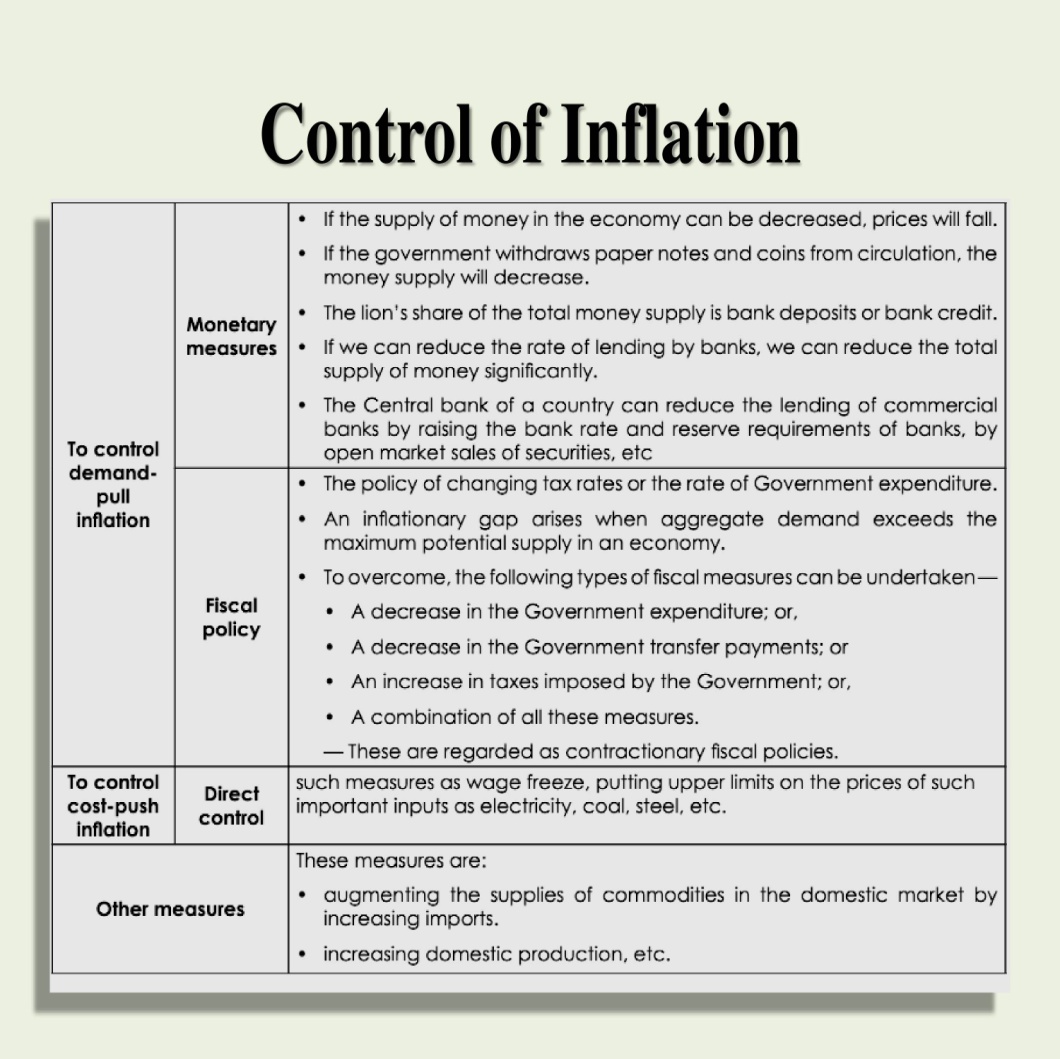
Conclusion
From the various monetary, fiscal and other measures discussed above, it becomes clear that to control inflation, the government should adopt all measures simultaneously.
Inflation is like a hydra- headed monster which should be fought by using all the weapons at the command of the government.
https://epaper.thehindu.com/Home/ShareArticle?OrgId=GOJ9Q499P.1&imageview=0
Array ( [0] => daily-current-affairs/controlling-inflation [1] => daily-current-affairs [2] => controlling-inflation )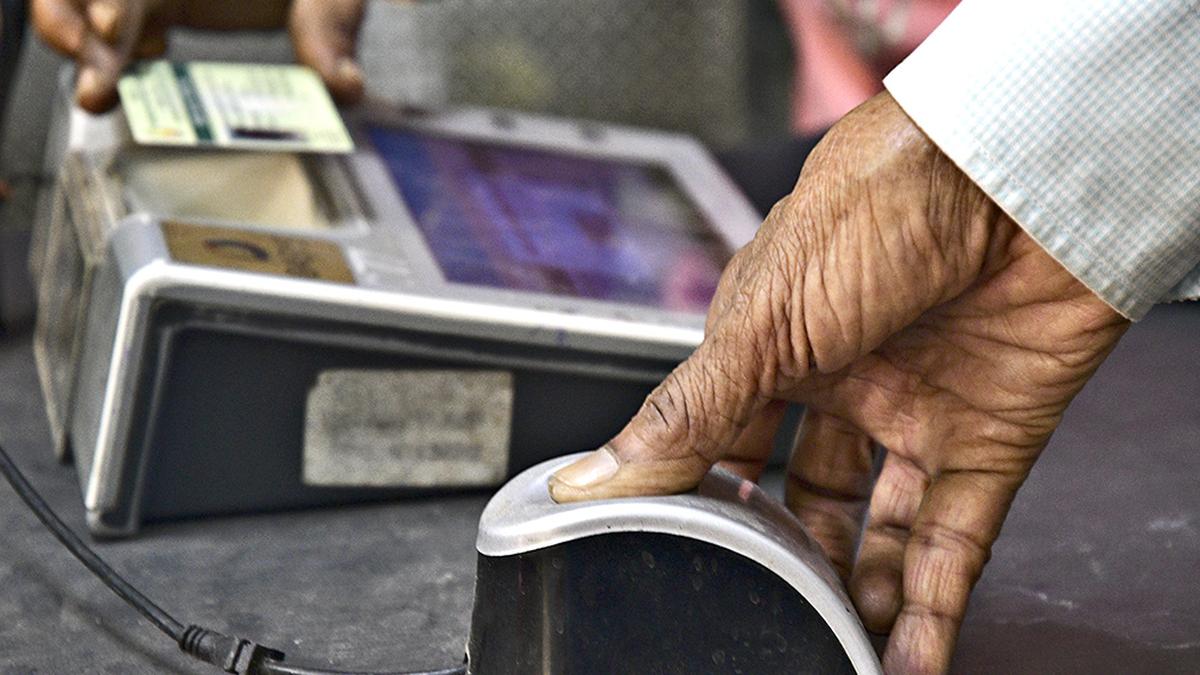


© 2025 iasgyan. All right reserved